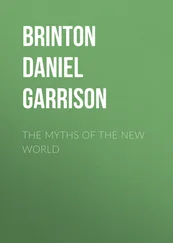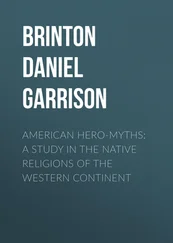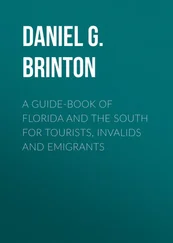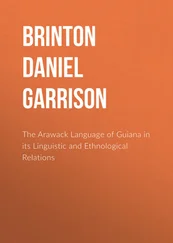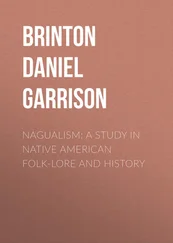Daniel Brinton - The Lenâpé and their Legends
Здесь есть возможность читать онлайн «Daniel Brinton - The Lenâpé and their Legends» — ознакомительный отрывок электронной книги совершенно бесплатно, а после прочтения отрывка купить полную версию. В некоторых случаях можно слушать аудио, скачать через торрент в формате fb2 и присутствует краткое содержание. Жанр: foreign_antique, foreign_prose, на английском языке. Описание произведения, (предисловие) а так же отзывы посетителей доступны на портале библиотеки ЛибКат.
- Название:The Lenâpé and their Legends
- Автор:
- Жанр:
- Год:неизвестен
- ISBN:нет данных
- Рейтинг книги:4 / 5. Голосов: 1
-
Избранное:Добавить в избранное
- Отзывы:
-
Ваша оценка:
- 80
- 1
- 2
- 3
- 4
- 5
The Lenâpé and their Legends: краткое содержание, описание и аннотация
Предлагаем к чтению аннотацию, описание, краткое содержание или предисловие (зависит от того, что написал сам автор книги «The Lenâpé and their Legends»). Если вы не нашли необходимую информацию о книге — напишите в комментариях, мы постараемся отыскать её.
The Lenâpé and their Legends — читать онлайн ознакомительный отрывок
Ниже представлен текст книги, разбитый по страницам. Система сохранения места последней прочитанной страницы, позволяет с удобством читать онлайн бесплатно книгу «The Lenâpé and their Legends», без необходимости каждый раз заново искать на чём Вы остановились. Поставьте закладку, и сможете в любой момент перейти на страницу, на которой закончили чтение.
Интервал:
Закладка:
Roger Williams, describing the New England Indians, speaks of " Wunnam , their red painting, which they most delight in, and is both the Barke of the Fine, as also a red Earth." [116] Footnote_116_116 Key into the Language of America , p. 206
The word is derived from Narr. wunne , Del. wulit , Chip. gwanatsch = beautiful, handsome, good, pretty, etc.
The Indian who had artistically bedaubed his skin with red, ochreous clay, was esteemed In full dress, and delightful to look upon. Hence the term wulit , fine, pretty, came to be applied to the paint itself.
The custom of using such sticks, painted or notched, was by no means peculiar to the Delawares. They were familiar to the Iroquois, and the early travelers found them in common employment among the southern tribes. [117] Footnote_117_117 Lawson, in his New Account of Carolina , p. 180, says that the natives there bore in mind their traditions by means of a "Parcel of Reeds of different Lengths, with several distinct Marks, known to none but themselves." James Adair writes of the Southern Indians "They count certain very remarkable things by notched square sticks, which are distributed among the head warriors and other chieftains of different towns." History of the Indians , p. 75.
As the art advanced, in place of simple sticks, painted or notched, wooden tablets came into use, on which the symbols were scratched or engraved with a sharp flint or knife. Such are those still in use among the Chipeway, described by Dr. James as "rude pictures carved on a flat piece of wood;" [118] Footnote_118_118 Dr Edwin James, Narrative of John Tanner , p. 341
by the native Copway, as "board plates;" [119] Footnote_119_119 George Copway, Traditional History of the Ojibway Nation , pp 130, 131.
and more precisely by Mr. Schoolcraft, as "a tabular piece of wood, covered on both sides with a series of devices cut between parallel lines." [120] Footnote_120_120 Schoolcraft, Indian Tribes , Vol. I, p. 339.
The Chipeway terms applied to these devices or symbols are, according to Mr. Schoolcraft, kekeewin , for those in ordinary and common use, and kekeenowin , for those connected with the mysteries, the "meda worship" and the "great medicine." Both words are evidently from a radical signifying a mark or sign, appearing in the words given in Baraga's "Otchipwe Dictionary," kikinawadjiton , I mark it, I put a certain mark on it, and kikinoamawa , I teach, instruct him.
The character of the Delawares was estimated very differently, even by those who had the best opportunities of judging. The missionaries are severe upon them. Brainerd described them as "unspeakably indolent and slothful. They have little or no ambition or resolution; not one in a thousand of them that has the spirit of a man." [121] Footnote_121_121 Brainerd, Life and Journal , p. 410.
No more favorable was the opinion of Zeisberger. He speaks of their alleged bravery with the utmost contempt, and morally he puts them down as "the most ordinary and the vilest of savages." [122] Footnote_122_122 E. de Schweinitz, Life and Times of Zeisberger , p. 92.
Perhaps these worthy missionaries measured them by the standard of the Christian ideal, by which, alas, we all fall wofully short.
Certainly, other competent observers report much more cheerfully. One of the first explorers of the Delaware, Captain Thomas Young (1634), describes them as "very well proportioned, well featured, gentle, tractable and docile." [123] Footnote_123_123 Mass. Hist. Soc. Colls ., 4th series, Vol. IX, where Captain Young's journal is printed.
Of their domestic affections, Mr. Heckewelder writes: "I do not believe that there are any people on earth who are more attached to their relatives and offspring than these Indians are." [124] Footnote_124_124 Heckewelder MSS . in Amer Phil. Soc. Lib.
Their action toward the Society of Friends in Pennsylvania indicates a sense of honor and a respect for pledges which we might not expect. They had learned and well understood that the Friends were non-combatants, and as such they never forgot to spare them, even in the bloody scenes of border warfare.
"Amidst all the devastating incursions of the Indians in North America, it is a remarkable fact that no Friend who stood faithful to his principles in the disuse of all weapons of war, the cause of which was generally well understood by the Indians, ever suffered personal molestation from them." [125] Footnote_125_125 An Account of the Conduct of the Society of Friends toward the Indian Tribes , p. 72 (London, 1844). "in books recorded. May, like hoarded Household words, no more depart!"
The fact that for more than forty years after the founding of Penn's colony there was not a single murder committed on a settler by an Indian, itself speaks volumes for their self-control and moral character. So far from seeking quarrels with the whites they extended them friendly aid and comfort. [126] Footnote_126_126 The records of my own family furnish an example of this. My ancestor, William Brinton, arrived in the fall of 1684, and, with his wife and children, immediately took possession of a grant in the unbroken wilderness, about twenty miles from Philadelphia. A severe winter set in; their food supply was exhausted, and they would probably have perished but for the assistance of some neighboring lodges of Lenape, who provided them with food and shelter. It is, therefore, a debt of gratitude which I owe to this nation to gather its legends, its language, and its memories, so that they,
Even after they had become embittered and corrupted by the gross knavery of the whites (for example, the notorious "long walk,") and the debasing influence of alcohol, such an authority as Gen. Wm. H. Harrison could write these words about the Delawares: "A long and intimate knowledge of them, in peace and war, as enemies and friends, has left upon my mind the most favorable impression of their character for bravery, generosity and fidelity to their engagements." [127] Footnote_127_127 A Discourse on the Aborigines of the Valley of the Ohio , p. 25 (Cinn., 1838). I add the further testimony of John Brickell, who was a captive among them from 1791 to 1796. He speaks of them as fairly virtuous and temperate, and adds: "Honesty, bravery and hospitality are cardinal virtues among them." Narrative of Captivity among the Delaware Indians , in the American Pioneer , Vol. I, p. 48 (Cincinnati, 1844).
More than this, and from a higher source, could scarcely be asked.
That intellectually they were by no means deficient is acknowledged by Brainerd himself. "The children," he writes, "learn with surprising readiness; their master tells me he never had an English school that learned, in general, so fast." [128] Footnote_128_128 Life and Journal, p. 381
With the hints given us in various authors, it is not difficult to reconstruct the primitive religious notions of the Delawares. They resembled closely those of the other Algonkin nations, and were founded on those general mythical principles which, in my "Myths of the New World," I have shown existed widely throughout America. These are, the worship of Light, especially in its concrete manifestations of fire and the sun; of the Four Winds, as typical of the cardinal points, and as the rain bringers; and of the Totemic Animal.
As the embodiment of Light, some spoke of the sun as a deity, [129] Footnote_129_129 "Others imagined the Sun to be the only deity, and that all things were made by him." David Brainerd, Life and Journal , p. 395.
while their fifth and greatest festival was held in honor of Fire, which they personified, and called the Grandfather of all Indian nations. They assigned to it twelve divine assistants, who were represented by so many actors in the ceremony, with evident reference to the twelve moons or months of the year, the fire being a type of the heavenly blaze, the sun. [130] Footnote_130_130 Loskiel, Geschichte der Mission , p. 55.
Интервал:
Закладка:
Похожие книги на «The Lenâpé and their Legends»
Представляем Вашему вниманию похожие книги на «The Lenâpé and their Legends» списком для выбора. Мы отобрали схожую по названию и смыслу литературу в надежде предоставить читателям больше вариантов отыскать новые, интересные, ещё непрочитанные произведения.
Обсуждение, отзывы о книге «The Lenâpé and their Legends» и просто собственные мнения читателей. Оставьте ваши комментарии, напишите, что Вы думаете о произведении, его смысле или главных героях. Укажите что конкретно понравилось, а что нет, и почему Вы так считаете.




